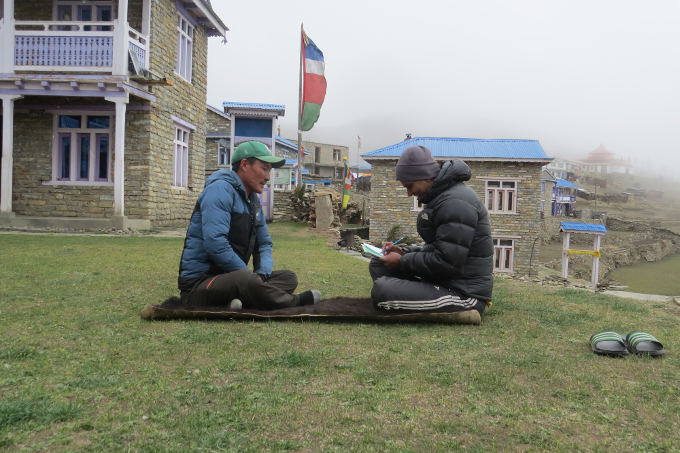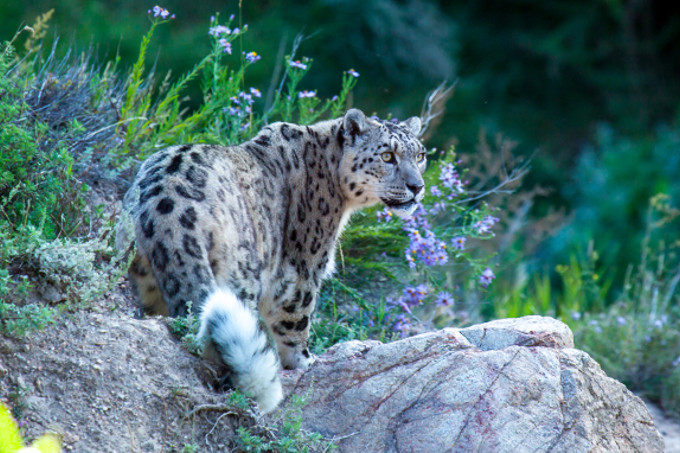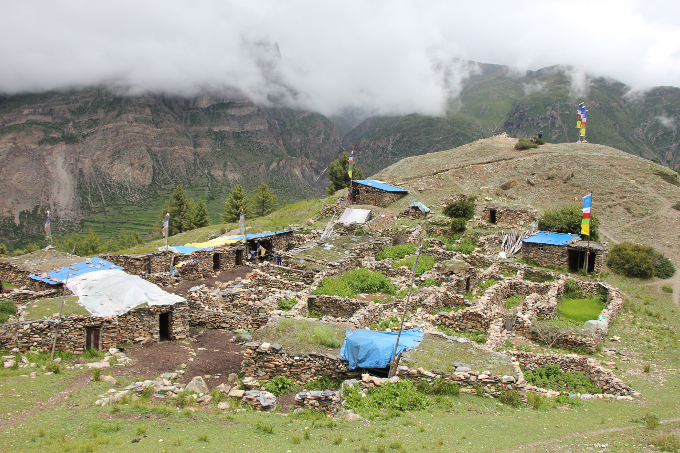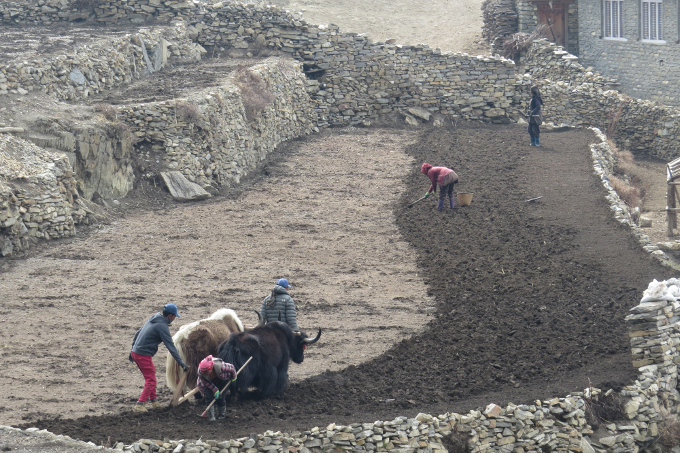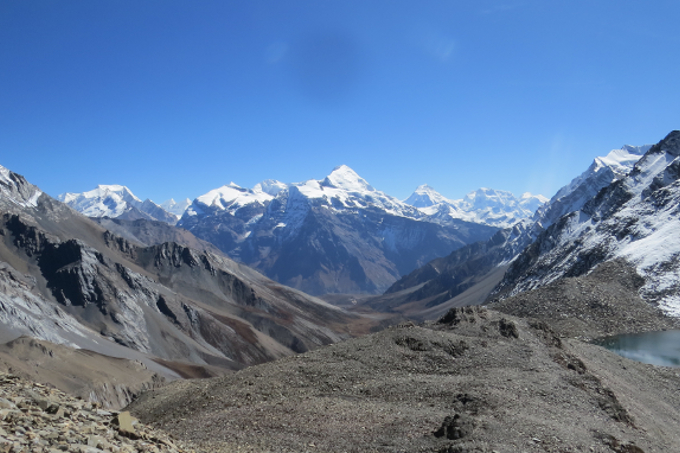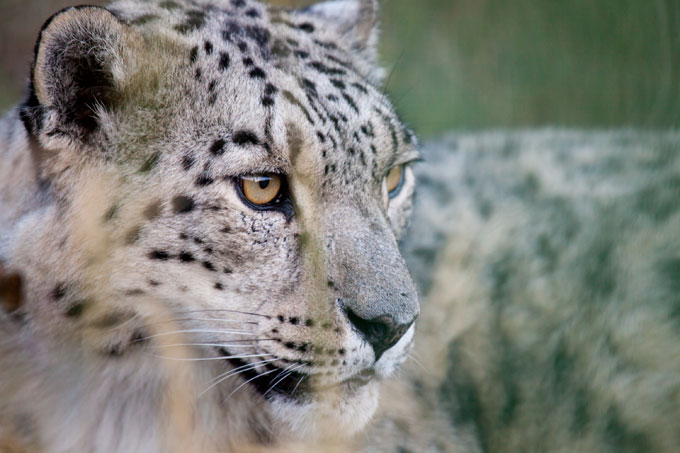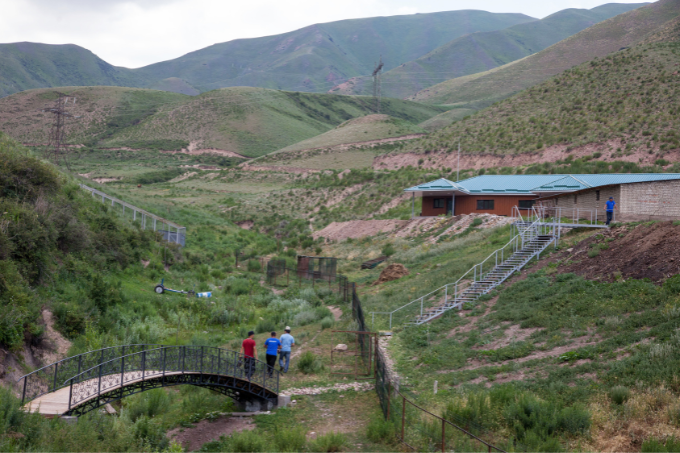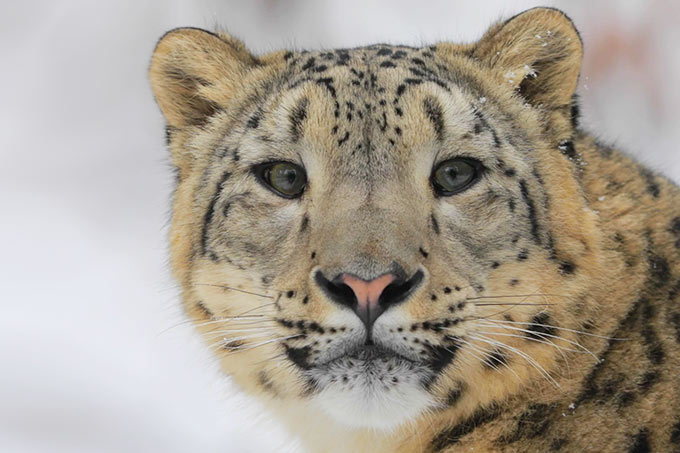Coexistence between human and snow leopard
Research on the conservation of snow leopards and livelihoods in Nepal
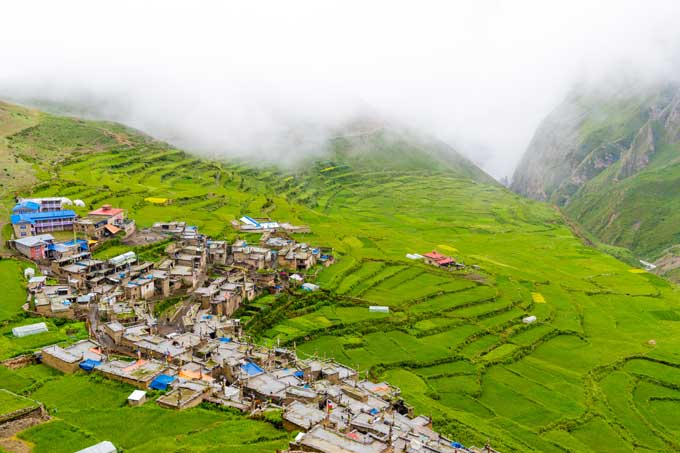
The Nar Phu Valley in northern Nepal is sparsely settled and serves as home to many animal and plant species - photo: stanciuc/ adobe.stock.com
In Nepal's Nar Phu Valley, conflicts often arise between snow leopards and people. While livestock owners fear for their livelihoods, snow leopards suffer under revenge killings. A project searches for ways to foster a peaceful coexistence between the species.
The valley lies in the north of Nepal, in the heart of the largest protected natural park in the country: the Annapurna Conservation Area. It covers 7,629 square kilometres and includes, with the eponymous Annapurna, not only one of the most famous 8,000-metre mountains in the world, but also a multitude of flora and fauna. Over 100 species of mammals and 3,400 plant species dwell here. Of these species, 65 are endemic to the area, living only here and nowhere else on the planet.
In the kingdom of 8,000-metre peaks
From green valleys at 800 metres in elevation, to peaks at 8,000 metres crowned year-round in snow – this region offers habitats, elevations and climatic conditions with a diversity seldom matched by other areas. And between these extremes: the little villages Phu and Nar. The settlement of Nar consists of approximately 65 households and is situated at an elevation of 4,200 metres – over 1,000 metres higher than Germany's loftiest peak, the Zugspitze. For many generations, the village residents have subsided on raising livestock, driving their animal herds through the mountainous landscapes around the village. They share their homeland with wild animals like the snow leopard. Unfortunately, their relationship with the big cats is complicated, as these pose a threat to the basis of the villagers' livelihoods.
A shared habitat
The Nar Phu Valley is sparsely settled and commands healthy populations of naturally native large mammals, such as blue sheep, Himalayan tahr and woolly hare, the prey animals of the snow leopard. Nonetheless, fraught encounters between snow leopards and humans continue to occur. One reason lies in the segmentation of the snow leopards' natural habitats. Their hunting areas commonly overlap with grazing areas for human-held livestock. Attacks on the village animals are the result.
In Nepal, only an estimated 350 to 500 snow leopards remain – and their numbers continue to decline. In order to protect both the endangered snow leopards and the livelihoods of local communities in the long term, it is essential to better understand snow leopard behaviour and their fragile relationship with humans. Through the project “Human and snow leopard – Coexistence in Nar Valley”, NABU and Wageningen University & Research are working together to close this knowledge gap and develop strategies for a peaceful coexistence.
-
Interviewing a village resident in Nepal's Nar Phu Valley - photo: Ashok Subedi
-
Only 350 to 500 snow leopards remain in the wild in Nepal - photo: Andy Fabian
-
Village communities in the Nar Phu Valley have subsided on cattle breeding for many generations - photo: Ashok Subedi
-
Traditional stalls are used to house working animals like sheep and goats, but snow leopards can easily break into these - photo: Om Gurung
-
With the help of yaks, the village residents plow their fields, in order to plant crops like barley and potatoes - photo: Ashok Subedi
-
The roof of the world: Snow leopards are perfectly adapted to the rugged mountain regions of Nepal - photo: Ashok Subedi
Citizen science in the Himalaya
The project adopts an innovative approach, actively integrating the local population into its research. To this end, a digital system has been developed and made available for all parts of the populace – for instance, via smartphone. Through it, village residents can record snow leopard attacks on grazing animals and their exact losses. Additionally, they can document traces of snow leopards, such as paw prints, food remains, bits of fur and scat. All data are collected and scientifically evaluated, in order to identify critical points for conflict between people and snow leopards, and devise suitable conservation measures.
In the initial project phase, surveys helped to establish the villagers' level of technical equipment and their experiences with snow leopards to date. According to the results, all participants were in possession of a mobile telephone and a majority regularly used the internet and social media. With this relatively high degree of digital competence and technical equipment, it is indeed possible to make the idea of citizen science a reality.
Growing awareness and participation
In 2022, the project continued into its next phase. Working in concert with NABU, the villagers, the administration of the conservation area and the research team of Wageningen University & Research developed a plan for the next four years, to secure the long-term flow of knowledge about the rare big cats and their conservation in the Annapurna area.
The project continues to build momentum and can already demonstrate a number of successes. In 2023, eight snow leopard-proof stalls were built. Workshops on the usage of the new app were conducted with the local populace and awareness for the project was raised. And the app is seeing acceptance and uptake: Over 80 traces of snow leopards have been logged into the app, and the “Livestock Depredation Form” in the app has been used 16 times to claim compensation. Each village's respective “Snow Leopard Conservation Subcommittee” dispenses these compensation payments in a simple and unbureaucratic fashion.
Report: Dramatic incident in Phu Village
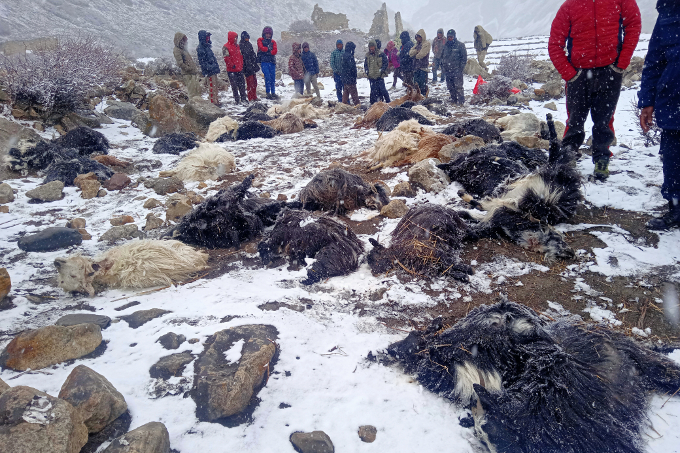
Sad impressions: In April 2021 in the village of Phu, 44 goats and sheep were killed by a snow leopard in one night - photo: Ashok Subedi
Small mountain villages in particular report repeatedly of snow leopards which attack local people's working animals. The potential gravity of such incidents for the local population can be seen in a report filed by the scientist Kamal Thapa: In April 2021 in the village of Phu, a snow leopard killed 44 goats and sheep in a single night – a heavy loss for the village residents. The snow leopard was trapped in a stall. Only with considerable tenacity and the promise of compensation was the scientist able to persuade the village community to let the snow leopard go free again.
Project facts
Project title
Human and snow leopard – Coexistence in Nar Phu Valley
Project region
Nar Phu Valley, Nepal, Manang District
Period
Phase 1: 2018-2021
Phase 2: 2022-2024
Project partners
The project is a cooperation between NABU and Wageningen University & Research. The project team thanks the local communities of the Nar Phu Valley and the National Trust for Nature Conservation (NTNC) for their support.
Financing
The project is financed through donations to the snow leopard conservation work of NABU.
MORE INFORMATION
Snow leopards are among the most endangered big cats on earth. Only 4,000 to 6,400 animals now live in the wild. NABU has been committed to the survival of snow leopards in Kyrgyzstan since 1999 and has extended its commitment to Tajikistan, Pakistan and Nepal. more →
Injured snow leopards can recover from their tribulations in the NABU wildlife rehabilitation centre, where they are nursed back to health. more →
Hunted for its beautiful fur coat and the alleged healing properties of its bones, the snow leopard is threatened with extinction. Adopt a snow leopard or support our project with your donation! Thank you! more →



